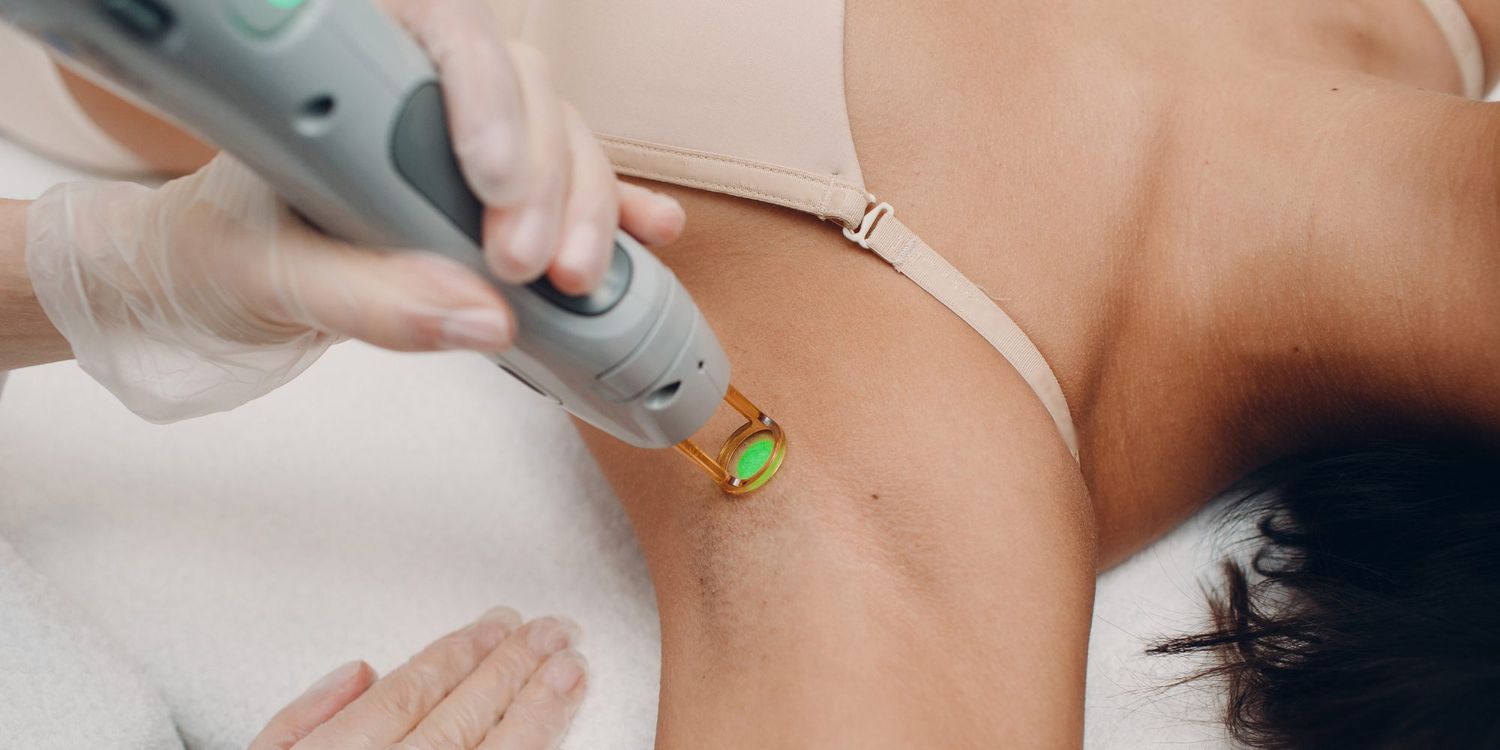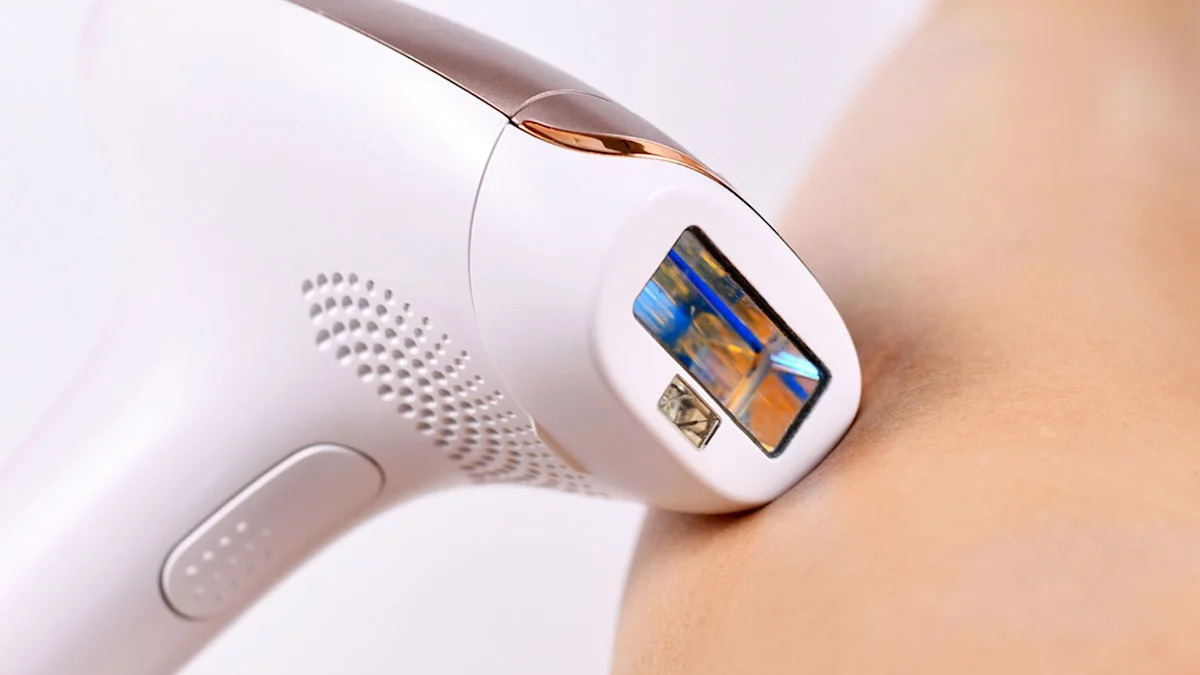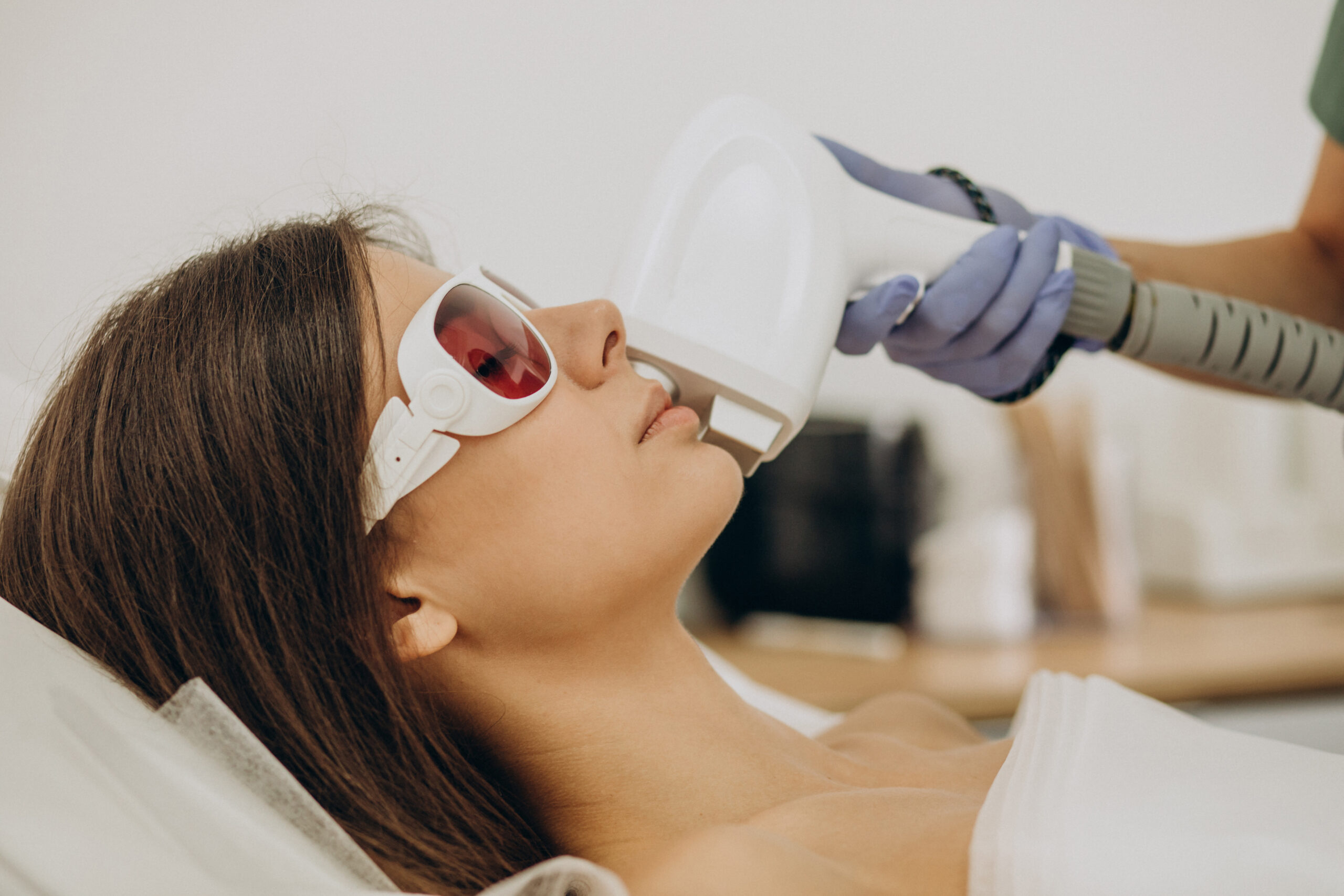

FAQs
How Permanent Is Laser Hair Removal?
Modified: September 23, 2023
Discover the permanence of laser hair removal and get answers to general questions about this popular cosmetic procedure.
(Many of the links in this article redirect to a specific reviewed product. Your purchase of these products through affiliate links helps to generate commission for Under-tec.com, at no extra cost. Learn more)
Table of Contents
- Introduction
- How Does Laser Hair Removal Work?
- Factors That Affect the Permanent Results of Laser Hair Removal
- Skin and Hair Type
- Number of Treatment Sessions
- Quality of the Laser Equipment and the Expertise of the Technician
- Potential Side Effects and Risks of Laser Hair Removal
- Long-Term Maintenance and Touch-Up Treatments
- Conclusion
Introduction
Laser hair removal has become increasingly popular in recent years as a long-lasting solution for unwanted hair. It offers a convenient and effective way to achieve smooth, hair-free skin without the hassle of regular shaving, waxing, or plucking. But how permanent is laser hair removal? Can you say goodbye to unwanted hair forever?
Laser hair removal works by targeting the hair follicles with concentrated beams of light. The light is absorbed by the pigment in the hair follicles, which damages them and inhibits future hair growth. Unlike other hair removal methods that only remove the visible part of the hair, laser hair removal tackles the problem at its root.
While laser hair removal is known for its long-lasting results, it may not completely eliminate hair growth in all cases. There are several factors that can affect the permanence of the results, including your skin and hair type, the number of treatment sessions, the quality of the laser equipment, and the expertise of the technician performing the procedure.
It’s important to have realistic expectations when considering laser hair removal. While it can significantly reduce hair growth and provide long-lasting results, complete hair removal may not be achievable for everyone. Understanding the factors that influence the permanency of laser hair removal results can help manage expectations and determine the best course of action for your individual needs.
In this article, we will explore the factors that affect the permanent results of laser hair removal and discuss the potential side effects and risks associated with the procedure. Additionally, we will address the importance of long-term maintenance and touch-up treatments to maintain the desired results.
Read on to discover more about the effectiveness of laser hair removal and what you can expect from this popular hair removal method.
How Does Laser Hair Removal Work?
Laser hair removal is a cosmetic procedure that uses concentrated beams of light to remove unwanted hair. The process involves targeting the hair follicles with the laser, which damages them and inhibits future hair growth.
During the procedure, a handheld device is used to emit pulses of laser light onto the targeted area. The light is absorbed by the pigment in the hair follicles, which converts it to heat. This heat damages the follicles, weakening them and reducing their ability to produce new hair.
It’s important to note that laser hair removal is most effective on dark, coarse hair. The laser targets melanin, the pigment that gives hair its color, so individuals with darker hair and lighter skin tend to see the best results. However, advancements in laser technology have made it possible for people with different skin and hair types to undergo the procedure.
Multiple treatment sessions are typically required for optimal results. Hair grows in different stages, and laser hair removal is most effective when the hair follicles are in the active growth phase. By scheduling multiple sessions over a period of time, it ensures that all the hair follicles are targeted at their most vulnerable stage.
While laser hair removal offers long-term results, it’s important to note that it may not completely eliminate hair growth for everyone. Some individuals may experience a reduction in hair growth, while others may require maintenance treatments to keep the unwanted hair at bay.
In the next sections, we will explore the various factors that can influence the permanence of laser hair removal results and what you can do to maximize the effectiveness of the procedure.
Factors That Affect the Permanent Results of Laser Hair Removal
While laser hair removal is known for its long-lasting results, the permanence of those results can vary from person to person. Several factors influence how effective laser hair removal is in eliminating unwanted hair. Understanding these factors can help you manage your expectations and achieve the best possible outcomes.
1. Skin and Hair Type: The color and texture of your skin and hair play a significant role in the success of laser hair removal. The laser targets the pigment in the hair follicles, so individuals with dark, coarse hair and lighter skin tones tend to respond best to treatment. Lighter hair colors, such as gray or blonde, may be more challenging to treat effectively as they have less pigment for the laser to target.
2. Number of Treatment Sessions: Laser hair removal typically requires multiple treatment sessions to achieve optimal results. Hair growth occurs in cycles, and the laser can only effectively target hair in the active growth phase. Therefore, multiple sessions are necessary to treat all the hair follicles at the right stage of growth. On average, most individuals require six to eight sessions spaced several weeks apart.
3. Quality of the Laser Equipment and the Expertise of the Technician: The type and quality of the laser equipment used during the procedure can significantly impact the results. It’s important to choose a reputable clinic that uses advanced technology and employs experienced technicians who are skilled in performing laser hair removal. A skilled technician will ensure that the laser is set at the appropriate settings for your skin and hair type, maximizing the effectiveness of the treatment while minimizing the risk of side effects.
4. Hormonal Changes and Medical Conditions: Hormonal changes in the body can affect hair growth, and certain medical conditions such as PCOS (polycystic ovary syndrome) can result in excessive hair growth. In these cases, laser hair removal may still provide significant hair reduction but may require ongoing maintenance treatments to manage regrowth.
It’s important to remember that the effectiveness of laser hair removal can vary from person to person. While some individuals may achieve near-permanent hair reduction, others may experience partial regrowth that can be managed with maintenance treatments. Additionally, individual responses to laser hair removal can change over time due to factors such as aging, hormonal changes, or the development of new hair follicles.
In the next sections, we’ll explore the potential side effects and risks of laser hair removal and discuss the importance of long-term maintenance and touch-up treatments.
Skin and Hair Type
One of the key factors that influence the effectiveness and permanence of laser hair removal is your skin and hair type. The success of the treatment largely depends on the contrast between the color of your skin and the color of your hair.
Laser hair removal works by targeting the pigment in the hair follicles, which absorbs the laser energy and heats up, damaging the follicles and inhibiting hair growth. Because the laser seeks out the pigment, it is most effective on individuals with dark, coarse hair and lighter skin tones. The contrast between the hair color and the skin color allows the laser to effectively target the hair follicles without causing damage to the surrounding skin.
People with fair skin and dark hair tend to be the best candidates for laser hair removal. The laser can easily differentiate between the hair follicles and the surrounding skin, ensuring that the hair follicles absorb the majority of the energy. This results in more successful and long-lasting hair reduction.
On the other hand, individuals with darker skin tones may face some challenges with laser hair removal. The higher levels of melanin in the skin can absorb the laser energy, making it more difficult to distinguish between the hair follicles and the surrounding skin. This can increase the risk of side effects such as burns or discoloration. However, with advancements in laser technology, there are now lasers specifically designed to accommodate different skin types, reducing the risk of complications and allowing for successful hair reduction.
Additionally, the color of the hair itself plays a role in the success of laser hair removal. Darker hair contains more melanin, which absorbs the laser energy more effectively. Lighter hair colors, such as blonde, gray, or red, contain less pigment and may be more challenging to target with laser treatment. However, advancements in laser technology have made it possible to treat a wider range of hair colors and achieve satisfactory results.
It’s important to consult with a qualified and experienced professional who can assess your skin and hair type to determine if you’re a suitable candidate for laser hair removal. They will be able to recommend the best approach and discuss any potential risks or limitations based on your individual characteristics.
In the following sections, we will discuss other important factors that can influence the permanence of laser hair removal results, such as the number of treatment sessions, the quality of the laser equipment, and the expertise of the technician.
Number of Treatment Sessions
The number of treatment sessions you need for laser hair removal plays a crucial role in achieving optimal and long-lasting results. Multiple sessions are typically required to target all the hair follicles at different stages of growth and ensure effective hair reduction.
Hair growth occurs in cycles, and each individual hair follicle goes through three stages: anagen (active growth phase), catagen (transitional phase), and telogen (resting phase). Laser hair removal is most effective during the anagen phase when the hair follicle is actively producing new hair. At any given time, only a portion of your hair is in the anagen phase, while the rest is in the catagen or telogen phase.
By scheduling multiple treatment sessions spaced several weeks apart, it allows the laser to target different hair follicles at their most vulnerable stage of growth. This way, you can effectively treat hair that may have been in the catagen or telogen phase during previous sessions.
On average, most individuals require six to eight treatment sessions for optimal results. However, the exact number of sessions needed can vary depending on several factors, including your hair type, skin type, and the specific areas being treated. Some individuals may require fewer sessions, while others may need more to achieve the desired outcome.
It’s important to follow the recommended treatment schedule provided by your healthcare professional. Skipping sessions or extending the time between sessions can significantly impact the effectiveness of the treatment. Consistency is key to ensure that all the hair follicles are targeted and treated during their active growth phase.
After completing the initial set of treatment sessions, you may still need occasional maintenance sessions to manage any regrowth. While laser hair removal can significantly reduce hair growth, it may not permanently eliminate all hair follicles. Factors like hormonal changes, aging, or the development of new hair follicles can contribute to new hair growth over time.
During your consultation, your healthcare professional will be able to assess your specific needs and provide a personalized treatment plan. They will guide you on the recommended number of sessions and any necessary touch-up treatments to maintain the desired results.
In the next sections, we will discuss the significance of the quality of the laser equipment used and the expertise of the technician performing the procedure in ensuring the effectiveness of laser hair removal.
Quality of the Laser Equipment and the Expertise of the Technician
The quality of the laser equipment used and the expertise of the technician performing the laser hair removal procedure are critical factors in achieving effective and long-lasting results.
High-quality laser equipment is crucial for successful hair reduction. Advanced laser devices with the latest technology can deliver precise and targeted energy to the hair follicles, maximizing the effectiveness of the treatment while minimizing the risk of complications. These advanced lasers can also adjust settings based on individual skin and hair characteristics, ensuring accurate treatment tailored to each person’s needs.
When selecting a clinic or a professional for your laser hair removal treatments, it’s essential to choose one that uses reputable and FDA-approved laser devices. Clinics and technicians that prioritize investing in high-quality equipment demonstrate their commitment to delivering safe and effective treatments.
Equally important is the expertise of the technician performing the procedure. Laser hair removal is a delicate process that requires skill and precision. An experienced and trained technician will have a deep understanding of laser technology, skin and hair types, and how to adjust laser settings to ensure optimal results.
During your consultation, ask about the technician’s qualifications, experience, and certification in performing laser hair removal. A knowledgeable technician will be able to assess your skin and hair type accurately, determine the appropriate treatment parameters, and address any concerns or questions you may have.
Additionally, a skilled technician will ensure that the laser is set at the appropriate settings for your unique needs, striking the right balance between effectively targeting the hair follicles and minimizing the risk of adverse effects.
Remember, the success of laser hair removal depends not only on the technology being used but also on the skill and expertise of the person performing the treatment. A well-trained technician can provide guidance throughout the process, ensure your safety, and deliver optimal results.
By choosing a reputable clinic with experienced technicians, you can have peace of mind knowing that you’re receiving safe and effective laser hair removal treatments.
In the following sections, we will discuss the potential side effects and risks associated with laser hair removal, as well as the importance of long-term maintenance and touch-up treatments.
Potential Side Effects and Risks of Laser Hair Removal
Laser hair removal is generally considered a safe procedure when performed by a trained and experienced professional. However, like any cosmetic treatment, there are potential side effects and risks to be aware of before undergoing the procedure.
1. Skin Irritation: Following laser hair removal, it is common to experience temporary skin irritation such as redness, swelling, or sensitivity in the treated area. These effects usually subside within a few hours or days post-treatment.
2. Changes in Skin Color: In some cases, laser hair removal can cause temporary changes in skin color, particularly in individuals with darker skin. Temporary hyperpigmentation (darkening of the skin) or hypopigmentation (lightening of the skin) may occur, but these changes typically resolve on their own over time.
3. Skin Burns: Improper settings or incorrect technique during the laser hair removal procedure can result in burns. While rare, burns can cause blistering, scarring, or changes in skin texture. It’s crucial to choose a reputable clinic and experienced technician to minimize the risk of burns.
4. Eye Injury: Laser hair removal utilizes high-intensity light that can be harmful to the eyes. Proper eye protection, such as goggles or shields, should always be worn during the treatment to protect the eyes from potential damage.
5. Sun Sensitivity: After laser hair removal, the treated skin may be more sensitive to sunlight. It’s essential to protect the treated area from UV exposure and consistently apply broad-spectrum sunscreen to minimize the risk of sunburn or changes in pigmentation.
6. Infection: While rare, there is a minimal risk of infection following laser hair removal. It’s important to follow post-treatment care instructions provided by your healthcare professional and keep the treated area clean to reduce the risk of infection.
It’s important to discuss any possible risks and side effects with your healthcare professional before undergoing laser hair removal. They will assess your individual circumstances, including your skin type and any existing medical conditions, to determine the suitability of the procedure for you.
It’s worth noting that the majority of individuals who undergo laser hair removal experience minimal to no side effects and are satisfied with the results. By choosing a reputable clinic and following proper aftercare instructions, you can minimize the risk of complications and safely enjoy the benefits of laser hair removal.
In the following sections, we will discuss the importance of long-term maintenance and touch-up treatments to preserve the desired results of laser hair removal.
Long-Term Maintenance and Touch-Up Treatments
While laser hair removal can provide significant and long-lasting reduction in hair growth, it’s important to understand that the procedure may not permanently eliminate all hair follicles. To maintain the desired results, long-term maintenance and occasional touch-up treatments may be necessary.
After completing the initial set of laser hair removal sessions, you may notice a significant reduction in hair growth in the treated area. However, hormonal changes, aging, or the development of new hair follicles can contribute to regrowth over time. To manage these changes, periodic maintenance sessions can help to address any new hair growth and maintain the desired smoothness.
The frequency of maintenance sessions can vary depending on individual factors, such as your hair type, skin type, and the specific area being treated. Your healthcare professional will be able to assess your needs and recommend an appropriate schedule for touch-up treatments.
It’s important to note that the regrowth you may experience after laser hair removal is often finer and lighter in color compared to the original hair. This can make touch-up treatments more manageable and less time-consuming compared to the initial series of sessions.
In addition to touch-up treatments, there are several practices you can incorporate into your hair removal routine to prolong the effectiveness of laser hair removal:
– Avoid plucking, waxing, or threading: These methods can remove the hair follicles that need to be targeted by the laser. Stick to shaving or trimming instead.
– Protect your skin from the sun: UV exposure can increase the risk of pigment changes and other complications. Apply broad-spectrum sunscreen and cover the treated area when exposed to sunlight.
– Stay consistent with your maintenance schedule: Regular touch-up treatments can help keep unwanted hair at bay and maintain the desired results over time.
By following these maintenance practices and staying proactive with touch-up treatments, you can enjoy long-lasting results and a significant reduction in hair growth.
It’s important to have open communication with your healthcare professional throughout the process. They will guide you on the best maintenance regimen based on your individual needs and ensure that you achieve the desired outcome from your laser hair removal treatments.
In the next section, we will provide a brief recap of the main points discussed in this article.
Conclusion
Laser hair removal offers a convenient and effective solution for long-lasting hair reduction. While it is known for its ability to significantly reduce hair growth, complete hair removal may not be achievable for everyone. Understanding the factors that influence the permanence of laser hair removal results can help manage expectations and determine the best course of action for individual needs.
The effectiveness of laser hair removal is influenced by factors such as skin and hair type, the number of treatment sessions, the quality of the laser equipment used, and the expertise of the technician performing the procedure. It is essential to consult with a qualified professional who can assess your specific needs and recommend the most suitable approach.
It is important to note that laser hair removal does come with potential risks and side effects. These include temporary skin irritation, changes in skin color, skin burns, eye injury, sun sensitivity, and the risk of infection. However, these risks can be minimized by choosing a reputable clinic and following proper aftercare instructions.
Maintaining the desired results of laser hair removal requires long-term maintenance and occasional touch-up treatments. Periodic sessions may be necessary to address new hair growth and keep the treated area smooth. Additionally, practicing good sun protection habits and avoiding methods that remove hair follicles can help prolong the effectiveness of the treatment.
In conclusion, laser hair removal can provide significant and long-lasting reduction in hair growth. While complete hair removal may not be possible for everyone, managing expectations, choosing a reputable clinic, and following proper maintenance can help achieve and maintain the desired results. Consult with a qualified professional to discuss your individual needs and create a personalized treatment plan that works best for you.










